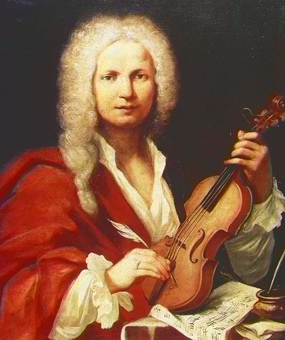
It cannot have escaped your notice that here in Thailand we are going through a period of seasonal change. Even so, in this part of the world the change of seasons seems less dramatic than that in Europe and North America.
Of course, it’s partly to do with the Earth’s orbit around the Sun and the way that our planet tilts on its axis. In the more northern and southern regions this titling causes the sun to appear higher in the sky in summer bringing significant changes to the duration and intensity of sunlight. Perhaps the contrast between the seasons is why European composers and painters have found them so interesting for there are dozens of classical works on the themes of spring and summer. Musical works that pull all the seasons together are less common.
You’ve almost certainly heard of Vivaldi’s pot-boiler The Four Seasons, perhaps the only musical work that might have inspired a pizza. Composed in 1723, it’s one of Vivaldi’s best-known compositions but it’s actually a collection of four quite separate violin concertos which bear the name of each season.
Vivaldi was not the first to take up the seasonal theme. In 1695 the prolific French baroque composer Jean-Baptiste Lully wrote an opera-ballet called Les Saisons although it was more akin to a ballet than an opera. Joseph Haydn wrote his oratorio The Seasons after the success of his previous 1798 oratorio The Creation, then being performed all over Europe. The Seasons was premiered in 1801 after two years of hard work on Haydn’s part and interesting partly because the text is bilingual. Haydn’s music was tremendously popular in England and The Seasons was available in both English and German as indeed was The Creation before it.
Almost exactly a hundred years later in 1900, Alexander Glazunov’s ballet The Seasons, was first staged at the Mariinsky Theatre by the Russian Imperial Ballet. The splendidly-named tango composer Astor Pantaleón Piazzolla wrote the colourful Four Seasons of Buenos Aires and in 1947 John Cage wrote a ballet called The Seasons, his first composition for orchestra.
Antonio Vivaldi (1678-1741): The Four Seasons. Julia Fischer (vln) Academy of St. Martin in the Fields dir. Kenneth Sillito (Duration: 39:27; Video: 1080p HD)
There’s no shortage of good recordings of this exhilarating set of concertos but this one is excellent with a superb soloist, a world-renowned string orchestra and a lovely visual setting. It was filmed in the National Botanic Garden of Wales and beautifully lit and photographed in high definition so you can watch it on a large screen without noticeable loss in quality.
German violinist Julia Fischer is recognised worldwide for her technical prowess. She is an exceptionally gifted artist who has received numerous awards. She started learning the violin at the age of three and her performances on this recording are likely to be some of the best you’ll hear. The Academy of St. Martin-in-the-Fields is exemplary of course; firm and lively rhythmic playing, spot-on intonation and a splendid sense of ensemble.
The Four Seasons was published in Amsterdam in 1725 together with eight additional violin concertos. Unusually for the time, Vivaldi provided the concertos with accompanying poems which he probably wrote himself. No one seems to know for sure whether the music or the poems came first, but either way, the work is one of the earliest and most-detailed examples of what would later become known as programme music.
Vivaldi went to great lengths to link the text of the poems to the music, adding phrases from the text on the score as appropriate. These famously include a scene (at 03:27) in the first concerto in which a goatherd sleeps while his dog barks. A fair amount of imagination is required to realise that the repeated note on the viola is supposed to represent a barking dog. It sounds rather like a repeated note on the viola.
Peter Tchaikovsky (1840-1893): The Seasons. George Enescu Philharmonic Orchestra cond. Valentin Doni (Duration: 50:30; video 480p)
I suppose strictly speaking, this work should have been called “The Months” because in 1875, Nikolay Bernard, the editor of the St. Petersburg monthly music magazine Nouvellist, commissioned Tchaikovsky to write twelve short piano pieces, each to be published in his magazine every month throughout 1876. The editor suggested subtitles for each piece and presumably seeing this as a source of ready income, Tchaikovsky accepted the commission and the subtitles. The idea was evidently a success and some of the pieces have become famous in their own right.
In 1942 the Russian conductor Alexandr Gauk took it upon himself to orchestrate all twelve pieces and in subsequent years several other composers did much the same thing, including the American composer Morton Gould. However, Gauk’s fine orchestration brings out the distinctive character of these delightful works and they offer an intriguing insight into some of Tchaikovsky’s less well-known music.
 |
 |
 |





